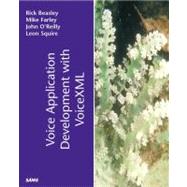Voice Application Development with Voice XML works from an application-centric approach, detailing how a programmer proficient in standard web application development tools and techniques can build voice-based applications and interfaces. The book presents both the structure and vocabulary of VoiceXML-the primary enabling technology for voice application development-as well as the best practices developed by the authors over years of voice interface design experience at Lucent.








